The Heresy of Breakthrough Startups
Breakthrough startups happen when founders refuse a hidden assumption, replace it with a better explanation, and make it impossible for early believers to unsee.
In Florence, one of Galileo’s telescopes is on display. It’s a simple leather tube with scratched glass and optics that look primitive today. Yet it was enough to overturn a conviction that had guided human thought for centuries: Earth was not the fixed center of the cosmos but just another planet in motion.
The Church felt threatened by Galileo’s new way of seeing the universe. In 1633, they put him on trial, forced him to recant his view, and kept him under house arrest for the rest of his life. They could silence his voice for a while, but they couldn’t erase his discovery. Centuries later, even the Church admitted the truth of what he had seen.
Galileo recants his discovery after the Inquisition.
Galileo’s greatest achievement was not the telescope itself. Others could make lenses. The breakthrough was Galileo’s willingness to see differently, to question what tradition declared unquestionable. The tool mattered less than the insight it led to.
This is similar to what we see in pattern-breaking startups. What begins as heresy often becomes the next foundation of knowledge.
Heresy and Pattern-Breaking Founders
Almost every breakthrough founder I’ve ever known was, in some sense, a heretic. True, they were smart and determined and persuasive. But it was more than that. They had seen a future that clashed with the present so decisively that most people dismissed it as impossible, stupid, or even crazy.
Here’s the hard truth: if what you’re doing doesn’t sound like heresy to someone, it’s probably too similar to what’s already been done. Incremental ideas can make money, but breakthroughs often seem like a business heresy. Without it, you’re just improving things inside the old frame instead of creating a new one.
Take Twitch. For years, the assumption was: “Nobody wants to watch other people play video games.” Gaming was seen as something you did, not something you spectated. Sports were for watching, games were for playing.
Twitch refused the conventional assumption and introduced a heretical idea: anyone could livestream their gameplay. Within a few years, it became clear that millions of people not only wanted to watch, but also to chat, cheer, and build community. What seemed like a niche hobby proved to be a new form of entertainment that could compete with cable television and even sports. Twitch showed that, for lots of people, watching games can be as compelling as playing them.
Galileo’s telescope opened the way to a new explanation of the cosmos. Twitch’s breakout success revealed a hidden truth about human behavior. Both were heresies because they attacked the foundation of what people “knew” to be true.
But here’s the deeper truth for founders: heresy itself is not the central issue. Most heresies are wrong. What matters is the creation of better explanations — ideas that solve more problems than the ones they replace. In Pattern Breakers, we call these better explanations insights. Heresy is simply what better explanations look like to those still committed to the old way of seeing.
The Messy Truth
Most heretical ideas don’t start as breakthroughs. They more often start as annoyances.
Before starting Stripe, the Collisons were just trying to accept payments for their previous startup. The process was so painful—merchant accounts, paperwork, weeks of waiting—that they built something for themselves. Brian Chesky wasn’t trying to revolutionize hospitality. He was broke and needed rent money, so he created a Wordpress site that rented out air mattresses during a design conference.
These weren’t empire builders executing a master plan, at least not at first. They were people frustrated enough with current circumstances to build their own solution.
It’s also tempting to view heretical startup ideas through the lens of contrarianism. But that is also overly determined. Contrarianism disagrees with the crowd; heresy replaces the crowd’s assumption with a better explanation. Beware contrarianism for its own sake. Many startup ideas are imitation dressed up as originality, like “Uber-for-X” derivatives that imitate a model of success without finding a new way to fix a real frustration. True heresy solves a deep problem in a way that departs from the consensus through original thinking, not just by being in opposition to existing ideas.
These messy truths are worth remembering, because we often turn breakthroughs into myths after they succeed. We create frameworks and principles to explain them. Yet in the beginning, they usually start with someone who simply says, ‘This doesn’t make sense. There must be a better way than the one everyone assumes.’
What Makes Some Ideas Matter
Not every frustration turns into a breakthrough. I’ve noticed that the ones that do often share three traits:
First, they challenge an assumption so deep, people don’t even realize they believe it. “Payments require cumbersome paperwork and banking compliance.” “You need to own music.” “Strangers won’t sleep in each other’s homes.” These aren’t opinions people argue about. They feel like facts about how the world works. This is where the refusal begins.
Second, they replace the old way with something so much better that the old way becomes unacceptable. The change is not marginal, but fundamental. After Stripe, merchant accounts seemed outdated. After Spotify, buying MP3s seemed unnecessary. This is the new way of seeing, even though at first it looks heretical.
Third, a fundamental change must occur to make the breakthrough possible. Stripe emerged because APIs had become widespread. Streaming music worked only when broadband was broadly available. Ridesharing became real when smartphones shipped with embedded GPS chips. The inflection is what allows a founder to see a potential new truth and imagine a different future.
Progress is not inevitable. It requires more than the availability of new enabling technology. A creative new explanation must unlock its potential. Technologies by themselves do nothing. Broadband, APIs, and GPS remained idle until someone explained how they could be applied to create new value.
Timing depends equally on people being prepared to adopt new habits. Uber and Lyft succeeded not only because smartphones existed, but because customers had become willing to share rides with strangers.
Even Galileo, who had truth on his side, had to face the fact that most of the world was not ready. In startups, timing often decides whether an idea remains a curiosity or grows into a transformative company. If you are too early, the technology may not support your idea, or society may not be ready to accept it. If you are too late, others might beat you to the opportunity.
Living Ahead of Others
Founders who uncover heresies aren’t necessarily “smarter” in the usual sense. They’re often just living in a different time — a few years ahead of the rest of us.
Take Daniel Ek at Spotify. In the mid-2000s, music executives saw piracy as theft, a threat to be shut down. They looked at The Pirate Bay and saw a crime scene.
Ek saw differently. Growing up in Sweden, where piracy was everywhere, he noticed something deeper: people weren’t rejecting music’s value. They were rejecting the friction of ownership. So when Daniel Ek looked at CDs, iTunes, and per-track purchases, he didn’t just see inconvenience. He saw an obsolete worldview, as outdated as buying a CD player. What people wanted was access. Instant, limitless, effortless. Piracy was ugly and illegal, but it hinted at a different future.
This is why so many smart people missed Spotify. They were still seeing the present, where music was a product to sell and would always be that way because it was the only approach the record labels would accept. Ek was seeing the future, where streaming was a better explanation for customers and the music industry.
Proof by Demos
Just explaining your heresy isn’t enough. You need tangible proof that grabs people. Galileo didn’t just argue; he invited others to look through his telescope.
Galileo demos his telescope for the Doge of Venice
Great startup products do this as well. They don’t debate. They show.
Stripe: Before, founders faxed forms and waited weeks for approval from a system organized around banking and compliance. Patrick Collison typed eight lines of Ruby code and charged a credit card in a room full of founders. What once took weeks collapsed into seconds.
Spotify: Daniel Ek took requests to play any tune at crowded parties. He typed whatever song people wanted, hit play, and music streamed instantly.
Tesla: In 2015, Tesla pushed a software update. Drivers double-clicked the cruise control stalk. The car steered itself. The definition of what a car even was seemed to instantly change.
Figma: Designers opened a shared file and saw multiple cursors moving at once. Collaboration wasn’t around a file attachment anymore…it was live.
These demos didn’t argue about the future. They dragged you into it. Suddenly, you were living in the founders’ reality, where payments happened instantly, where any song ever recorded played immediately, where electric cars could accelerate faster than Ferraris and drive themselves. And once you experienced that reality - even for just a second - the old one looked broken.
A pitch is an argument about the future. A great demo transcends argument by making people feel it.
Keeping Yourself Honest
There is no recipe for inventing heresies. Genuine breakthroughs cannot be summoned on demand, because the discovery of breakthrough insights is inherently unpredictable.
By the same token, founders rarely lack ideas. What they often lack is the ability to tell whether those ideas are breakthrough insights or merely variations on existing assumptions. In this uncertainty, I find the below questions useful for stress testing an idea’s potential.
Refusal: What entrenched assumption am I rejecting? If you cannot name it clearly, you may only be tinkering inside the old frame.
Heresy: What replacement truth explains more than the old view? If it does not solve more problems than it creates, it is not strong enough.
Inflection: Why now? What has changed in knowledge, technology, or human behavior to make it feasible today? If nothing fundamental has shifted, the idea may remain inert.
Demo: How can I show it in seconds rather than slides? A genuine breakthrough is experienced, not just argued.
These questions cannot predict which ideas will succeed. They do not generate vision, nor do they guarantee progress. Their value lies in the power of self-criticism: they help founders avoid self-deception, highlight where an idea is weak, and keep energy from being wasted on rationalizations that cannot stand.
Breakthroughs still depend on imagination, persistence, and error-correction. But with honesty, a founder can focus scarce attention on the few ideas that might truly overturn assumptions, rather than being distracted by the many that never could.
The Weight of Heresy
Every heresy carries a cost. Galileo spent his last years under house arrest. Darwin delayed publishing his work for fear of the extreme reaction he would surely provoke. Founders, too, face skepticism when they challenge accepted assumptions. But the most difficult resistance is not social. It is conceptual.
Old explanations persist because people cannot yet imagine an alternative. To Galileo’s contemporaries, the idea of a moving Earth was not only offensive, it was unthinkable. They defended the old framework because it was the only one available to them.
This is the true burden of heresy: it requires persistence at a time when others literally cannot see what you see. Institutions and customers resist not out of malice but because they lack the conceptual tools to recognize a better truth. The task of the founder is not simply to endure opposition, but to supply the new framework that makes the old one untenable.
Most contrarian ideas fail because they never progress to this stage. They create discussion, but they do not deliver a superior explanation. When a stronger explanation does appear, one that is broad in scope, resilient to criticism, and difficult to dismiss, resistance begins to weaken. What once seemed absurd becomes accepted. History later describes the change as inevitable, even though it never was.
The weight of heresy is not measured by the volume of objections, but by the time required for the better explanation to take hold. Success belongs to those who can carry it until reality and imagination catch up.
See what others don’t; Solve what others can’t
Breakthrough founders usually do not predict the future. They discover better explanations that reveal it. And once you truly see it, you cannot unsee it. The old way no longer just looks worse.
It looks like history.



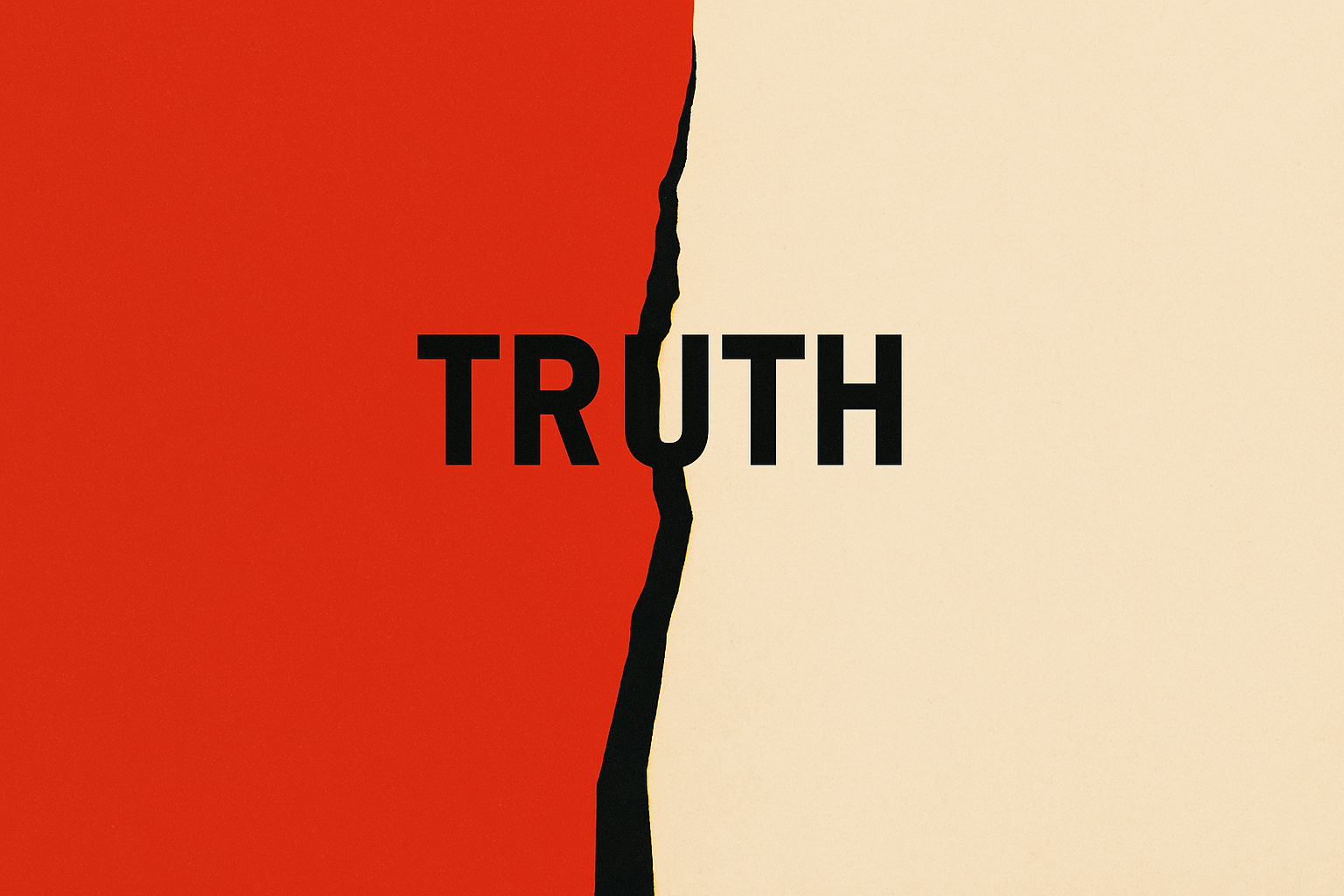
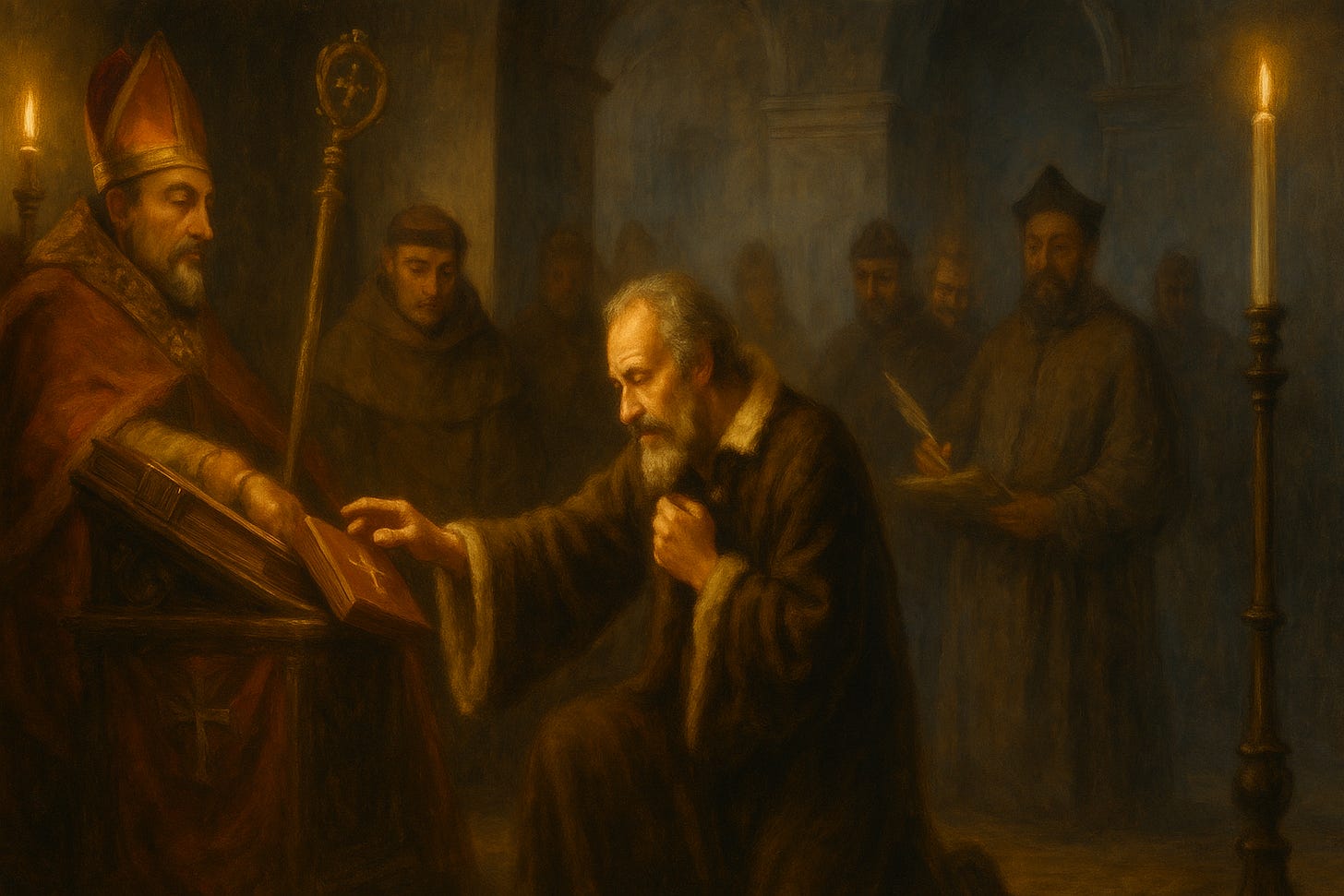
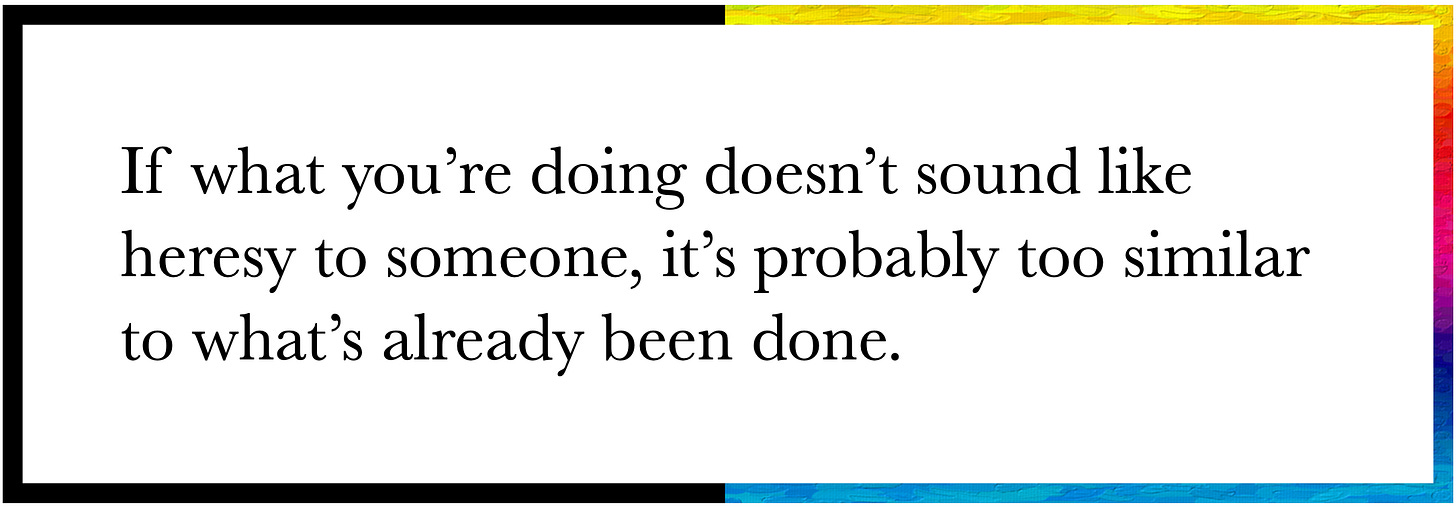
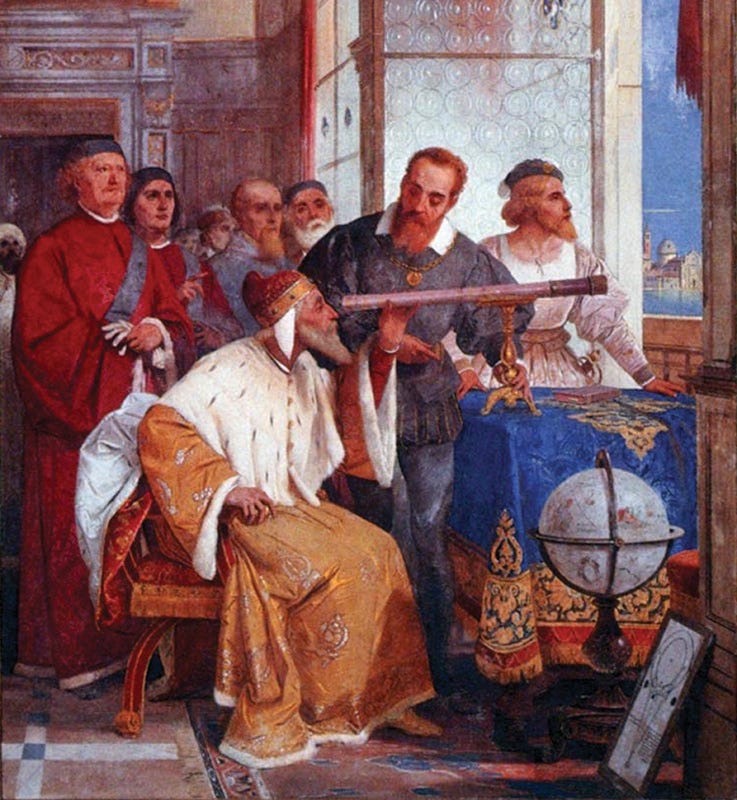
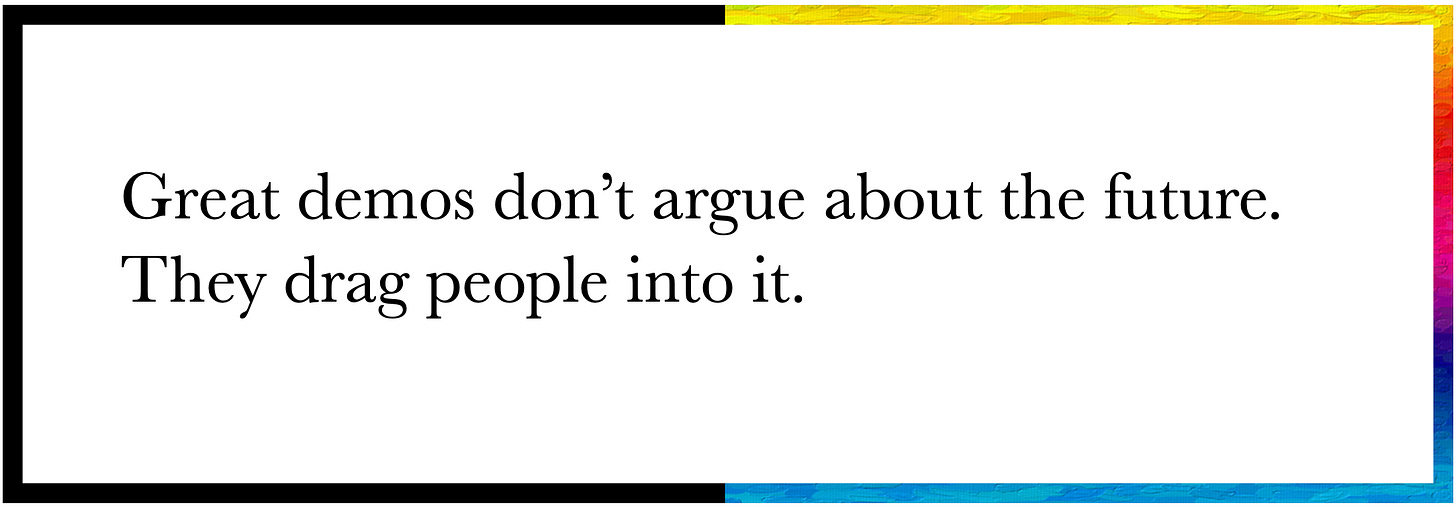
Great post Mike. Also a plug, Stealing from your book, I am from the future. Do you want to have a glimpse of how content production is going to change for large enterprises?
Possibly the best thing I have read this month. 9/30/25